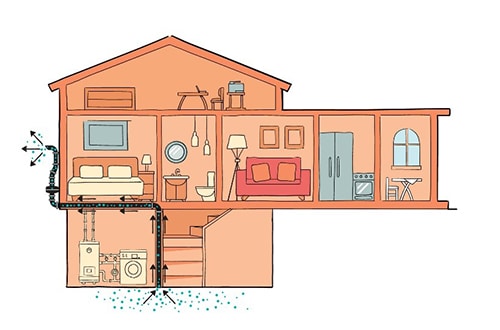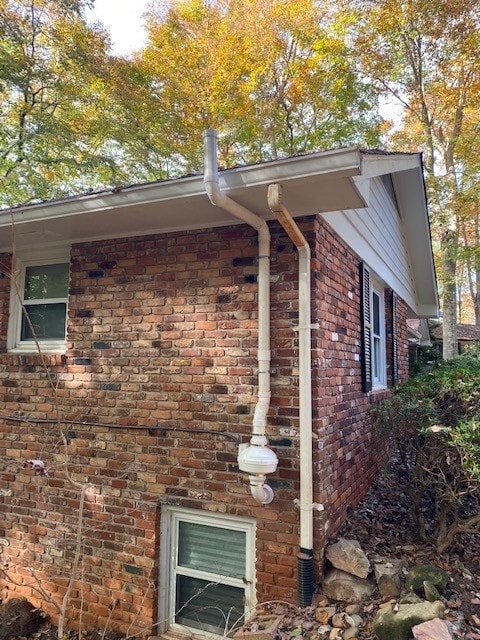Carol’s Radon Story: How I Made My Home Safer Through Radon Testing and Mitigation
I’m Carol, a CDC employee working in environmental health, and this is my radon story. Because of my work with CDC, I have been aware of the dangers of radon for years. I knew it was an odorless, colorless gas in the air that comes from rocks, soil, and water and can seep into homes from the ground without any signs. I knew that the only way to know a home’s radon level is by testing. I tested my home a number of years ago, and the level was 4 pCi/L. EPA recommends radon reduction, also called mitigation, for any home with a radon level above 4 pCi/L. However, I didn’t entirely grasp what these radon levels meant in terms of health risks.

The system draws radon gas beneath the basement floor up through the house and vents it outside above the house.
CDC’s Radon Awareness Week brought to my attention that EPA recommends retesting your home after repairs or renovations. I decided to retest my home since I had done some other repair work to my home over the past few years and was surprised that my radon levels were now above 10 pCi/L in my basement. A statistic that stood out to me in materials provided by a CDC partner, the American Association of Radon Scientists and Technologists, Inc., was that 10 pCi/L equals about 500 chest x-rays per year or about 20 cigarettes per day (one full pack)! I knew I needed to find a mitigation company and fix this problem.
First, I found information on my state radon program website about qualified contractors in my area, and then contacted two of them for estimates. The contractor I chose was well-qualified and had training and certification from the National Radon Proficiency Program, as recommended by EPA and the state radon program. The contractor evaluated my home and proposed a solution appropriate for my home’s structure and explained the mitigation process and cost. Once scheduled, the work was completed in less than a day and did not affect the finished part of my basement. The outside portion of the system is not visible from the front of the house.

Photo courtesy of Carol McCurley
My house after the installation. The vent pipe is in the back of the house.
The system consisted of a pipe that draws radon gas beneath the basement floor up through the house and vents it outside above the house. The radon gas from the vents will rise into the outdoor air and spread out so that the levels are low as they are naturally when produced from rocks, soil, and water. The contractor left a test instrument to check levels in my home after the system was installed, to make sure the levels were low in the house. The readings after 3 days indicated the levels were around 2 pCi/L, which is considered below the level of concern.
Knowing my home is safer for my family and that I’m no longer being exposed to high radon levels makes me feel much better. We are no longer breathing in radioactive material that can harm our lungs. I encourage others to test your home and if you have elevated levels, Don’t Wait—Mitigate!